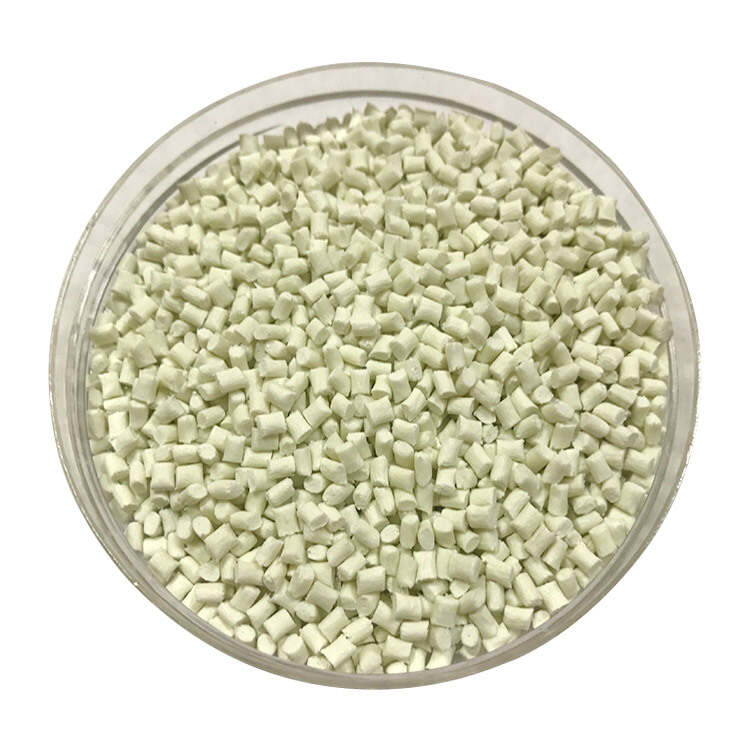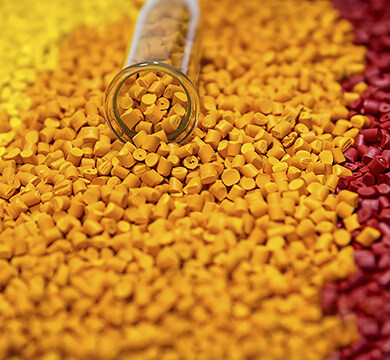Ошибка формата электронной почты
emailCannotEmpty
emailDoesExist
pwdLetterLimtTip
inconsistentPwd
pwdLetterLimtTip
inconsistentPwd

Offer Technical Support and Customized Solutions
The company is committed to creating new and improved plastic materials to meet the evolving demands of the market.

A Fresh Look at Plastic Pellets: Choosing Between PA6 and PA66
In today’s competitive manufacturing landscape, plastic pellets play a vital role across industries—from automotive and electronics to household appliances and textiles. Among these materials, two types of nylon—PA6 and PA66—stand out for their excellent mechanical properties, thermal stability, and chemical resistance. This article offers a detailed look at both PA6 and PA66, exploring their production processes, key differences, and how to select the best material for your application.
1. Basic Concepts and Production Processes
PA6
PA6 is produced through the ring-opening polymerization of caprolactam, resulting in a semi-crystalline polymer with a flexible molecular structure. Its relatively low melting point (around 220°C) makes PA6 easier to process, whether by injection molding, extrusion, or blow molding. Typically, PA6 pellets have a translucent or milky-white appearance, which facilitates further processing and modifications.
PA66
In contrast, PA66 is synthesized by the condensation polymerization of hexamethylenediamine with adipic acid. This process produces a polymer with a more ordered molecular structure and a higher degree of crystallinity. The additional hydrogen bonding in PA66 results in a higher melting point (approximately 260°C) and improved thermal stability, making it more suitable for applications where higher rigidity and dimensional stability are required. However, the processing conditions for PA66 are more demanding due to its higher melting temperature.
2. Performance Comparison
Melting Point and Thermal Stability
-
PA6: With a melting point around 220°C, PA6 is ideal for applications where lower processing temperatures are acceptable. Its flexibility also contributes to excellent impact resistance.
-
PA66: The higher melting point of PA66 (approximately 260°C) makes it the material of choice for applications requiring superior thermal stability and long-term performance under high-temperature conditions.
Moisture Absorption and Dimensional Stability
-
PA6: This material tends to absorb more moisture, which can affect its dimensional stability. As a result, proper drying before processing is crucial to maintain consistent performance.
-
PA66: Due to its lower moisture absorption, PA66 remains more dimensionally stable in humid environments, ensuring that parts maintain their precise shape over time.
Mechanical Properties
-
PA6: Known for its excellent toughness and impact resistance, PA6 is well-suited for products that require a degree of flexibility and resilience.
-
PA66: Offering superior tensile strength and rigidity, PA66 is preferred in high-load applications where parts are subject to continuous stress and mechanical strain.
3. Application Fields
Applications of PA6
PA6’s ease of processing and excellent impact resistance make it a popular choice in various sectors:
-
Automotive: Used in interior components such as dashboard trims and seat mechanisms.
-
Consumer Electronics and Appliances: Employed for housings and structural parts where both strength and cost-effectiveness are important.
-
Textiles: Utilized in the production of nylon fibers for fabrics and carpets due to its favorable processing properties.
Applications of PA66
PA66 excels in environments demanding high performance:
-
High-Performance Automotive Components: Ideal for engine covers, fuel system components, and other parts that operate under high temperatures.
-
Industrial Machinery: Often selected for gears, bearings, and other components that require robust mechanical strength and resistance to wear.
-
Electronics: Favored for precision parts in connectors and switches due to its excellent dimensional stability.
4. Material Modification and Composite Applications
Both PA6 and PA66 can be further enhanced through modification:
-
Glass Fiber Reinforcement: Adding glass fibers significantly improves rigidity and thermal resistance, particularly beneficial for PA66 in demanding applications.
-
Flame-Retardant Additives: In sectors like electronics and appliances, incorporating flame retardants ensures the material meets safety standards.
-
Recycled Materials: With a growing emphasis on sustainability, recycled nylon pellets are becoming popular, offering both environmental benefits and cost savings.
5. Guidelines for Material Selection
When deciding between PA6 and PA66, consider the following:
-
Operating Temperature: For products exposed to high temperatures, PA66 is the better option. For lower-temperature applications where impact resistance is paramount, PA6 is often sufficient.
-
Mechanical Load Requirements: If the application involves high stress and requires exceptional strength, PA66’s higher tensile strength and rigidity provide a clear advantage.
-
Processing Considerations and Cost: PA6 is generally easier and less costly to process, making it ideal for high-volume production. In contrast, the superior performance of PA66 justifies its use in critical, high-performance components despite the higher processing demands.
6. Conclusion
Both PA6 and PA66 have their distinct advantages and are suited to different applications. PA6, with its excellent impact resistance and cost-effectiveness, is widely used in consumer products and applications with moderate thermal demands. PA66, on the other hand, offers superior mechanical strength and thermal stability, making it the material of choice for high-performance and high-temperature applications.
The key to a successful material selection lies in a careful evaluation of your product’s specific requirements—be it operating conditions, mechanical loads, or cost constraints. By considering these factors and the possibility of further material modifications, manufacturers can achieve an optimal balance between performance and efficiency.

